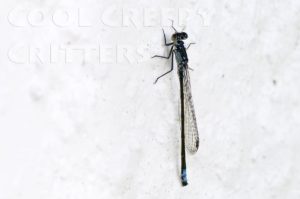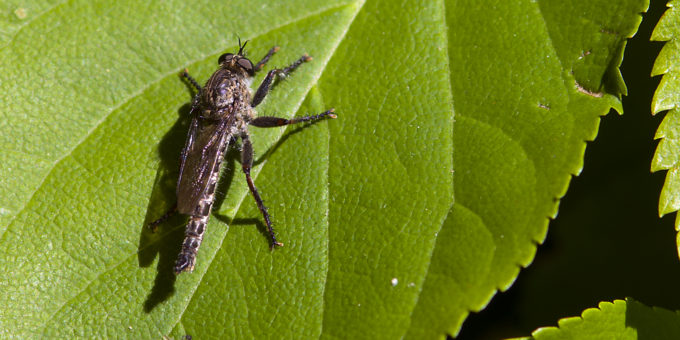Month: July 2018
The Tiny Twenty Plume Moths
This is the time of year a tiny moth starts to make its appearance around my garden. Alucitidae or Many plumed Moths are found primarily in Europe but in my parts (Vancouver Island) the one that is seen is the Twenty Plume Moth. These are considered “micromoths” and get their name due to their wing design. Unlike regular moths that have large scaled wings these plume moths have just that, feather like plumes that make up their wing set. In the case of the twenty plume moth there are again, as the name suggests approximately 20 of these plumes per wing.
These little moths are very small and have a wingspan of only around 14mm. Twenty Plume Moths are often found around the garden area with their wings spread out like little fans. Along with their small size and colouration they also tend to camouflage well into the bark of trees. This can make them a little difficult to spot sometimes. You might have better luck to notice them if they make their way into your home attracted to the light. I find a cup and paper the best way to scoop them up and set them free as they tend to flutter from the paper and land safely in the glass.
Even when spotted these tiny moths when viewed with the naked eye can be easy to overlook as just a small grey insect. But when you look close you really can see the amazing anatomy these creatures have evolved into. The pattern is quite striking and the design of the wings is really very impressive. So many of the small critters of our gardens get passed over but they really have a lot to offer if you take the time to look close. They can be some of the most beautiful and amazing cool creepy critters someone can come across.
Tiny #Moth resting on frosted glass in front of a sunset right before I helped it find its way back to the #garden #insect pic.twitter.com/I1SBpvgB1G
— CoolCreepyCritters (@CoolCcritters) September 6, 2017
Spider Living by a Wasp Nest Front Door
This could be the original odd couple . Back on July 1st I tweeted about this strange living relationship between this garden spider and this nest of wasps. These two species had been living seemingly peacefully for almost two weeks at the point of my first tweet.
This little #spider set up shop close to some rather formidable neighbours with this yellow jacket nest. But so far they seem to be coexisting peacefully for almost 2 weeks now. pic.twitter.com/OINvKKxbNp
— CoolCreepyCritters (@CoolCcritters) July 1, 2018
Several days later they were still apparently friendly
So far still being friends! @LocalWaspGuy pic.twitter.com/gwqFLGEzw9
— CoolCreepyCritters (@CoolCcritters) July 4, 2018
A few days ago I checked the location again and to my disappointment I did not see the spider. Yellow Jacket Wasps are powerful warriors and formidable predators. While as adults they tend to consume primarily carbohydrates with sugar rich foods like fruits and tree sap. However they do also collect meats which they feed to their young larva. Spiders in turn do sometimes prey on wasps if the spider is large enough and the wasp is adequately subdued in the spiders web.
This morning I decided to have another look, and low and behold , they are sill living side by side (see top image). The spider looks quite healthy and seems to have put on size since the first photos. It makes me wonder if the disappearance of the spider was perhaps due to it molting.
Both spiders and wasps are considered very beneficial to humans as both remove a large amount of pest insects and so are important for agriculture. Bees have gotten a lot of good press in recent years about how important they are in pollination and while this is great, many other species also deserve a more positive spotlight.
Just a Honeybee on a Daisy in Summer- Bees in the Garden
Most of the bees seem attracted to the lavender right now but this one spent considerable time enjoying some solitude on this flower.
Having a wide variety of plants for bees to accesses during the season is important in helping all the Honeybee, Bumblebee species as well as other pollinators. Having a diverse garden has the added benefit of becoming a lively living ecosystem that can be fascinating to watch. One thing to consider when planting to encourage bees is thinking about staggering different plants that bloom at different times. For example, I often leave some dandelions out in early spring when some pollinators are first emerging. Often it is one of the only sources of food for these early garden guests and leaving them something to accesses can be beneficial. Dandelions have a very nice flower and once someones idea of them as just a weed is overcome, a nice early addition to the garden.
Some other plants that seem very popular in my garden on Vancouver Island are:
- Common lilacs (which are also early to bloom)
- lavender,
- Globe Thistle,
- California lilacs
- Daisies
to name just a few.

It has been interesting and encouraging to see views on bees change over the years. As a kid I would often remember people killing bees as pests out of fear of being stung. At that same time I remember observing bumblebees in the garden and being fascinated at how gentle they were. I hope peoples appreciation for other insects and arachnids also develops over time. So many of these tiny creatures benefit us as a species as well as being fascinating subjects to observe.
Robber Fly-The Overlooked Top Predator in the Garden
The other day I noticed a little blue Damselfly so went back inside and grabbed my camera. When I came back I found this impressive Robber Fly instead. It was probably good for the Damselfly that it had moved on with this character around as Damselflies are a known prey item of these amazing insects.

Asilidae often called Robber Flies or Assassin Flies are powerful predators who often lie in wait in hot sunny areas of the garden. I have noticed this location on sunny flat vegetation is a favorite spot to find them. Robber Flies are truly amazing creatures and I would suspect are overlooked by people but they are fascinating predators of the garden. If you are lucky enough to notice one in the garden there is no need to be alarmed. They are not aggressive or dangerous to people but that said they should not be handled as they can and will defend themselves with a painful bite if threatened. They generally will be sitting motionless scanning the surrounding area for a potential meal.
A Necessary Brute of the Sky
Like any healthy ecosystem top predators like the Robber Fly are necessary to maintain the balance and health of that ecosystem so they are an important part of the garden. Depending on the location some Robber Flies can be very colourful and some even mimic other species like bumblebees. Most Robber Flies are powerfully built and can take down larger prey even having been known to capture and consume other top predators like wasps and dragonflies. When prey is captured a saliva containing toxin is injected through a powerful piercing proboscis which both paralyzes the prey and at the same time liquefies its tissue. The prey can then be consumed similar to how a spider consumes its prey.

Robber Flies are definitely what I would call Cool and Creepy Critters.



